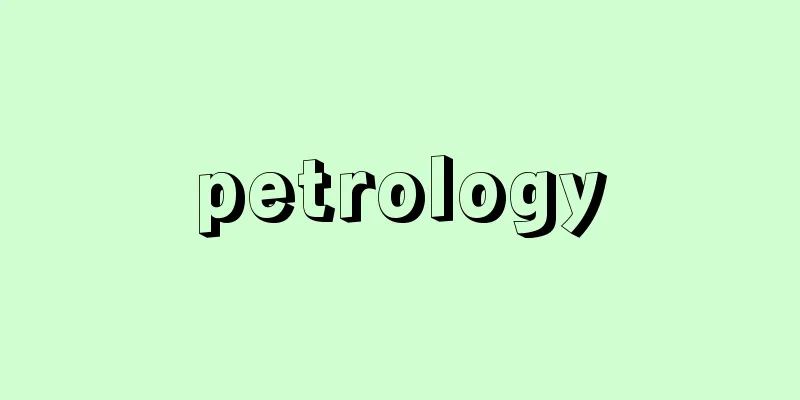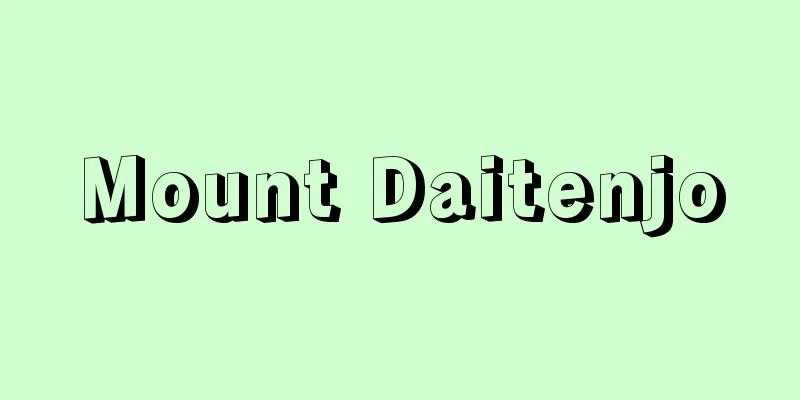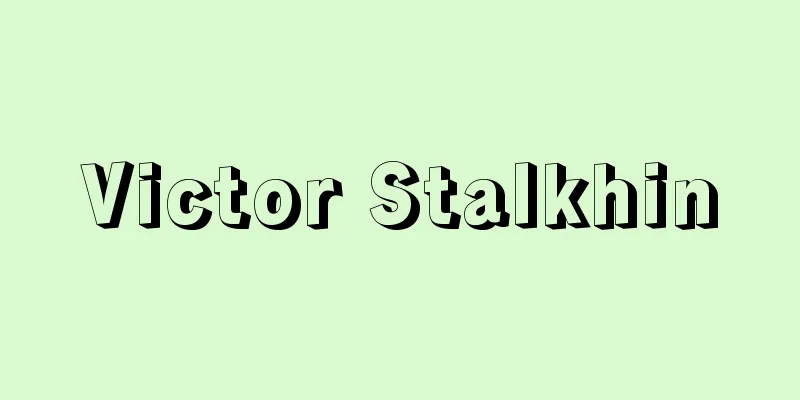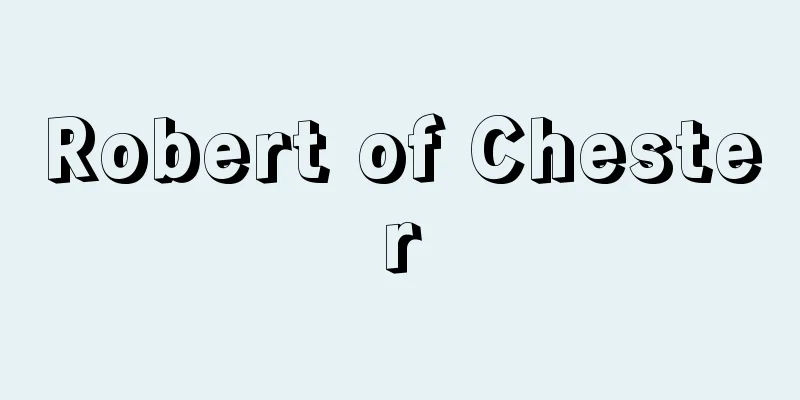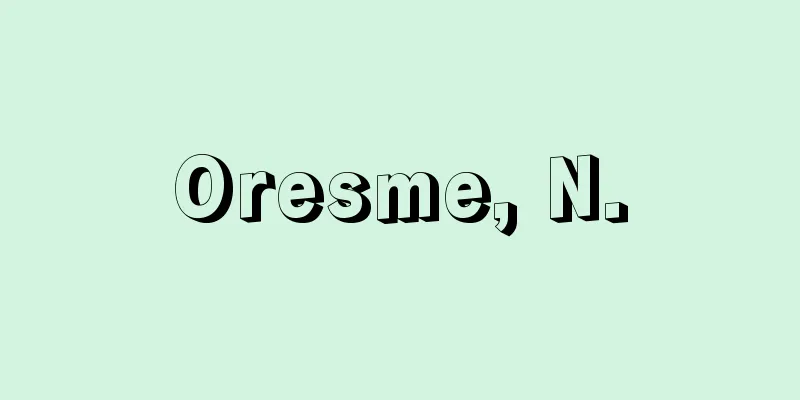City

|
A settlement with a large population and houses densely packed in a relatively small area, where the main economic life is commerce and industry, not agriculture. It is a term for a village, but the difference cannot necessarily be defined by the number of population (city, town, village). The characteristics of a city vary depending on the historical and social background of each era and region. For example, the oasis cities of the Orient (Ur, etc.) from the 6th to 1st millennium BC, when cities were born in Asia (each region), ancient European cities (polis), medieval cities, free cities, planned cities based on ancient despotism such as Chang'an in China and Heian-kyo in Japan in the East, castle towns, market towns, port towns, and temple towns that developed under feudalism in Japan, etc. After the Industrial Revolution, many industrial cities centered on industry emerged under capitalism, and in the 20th century, many large cities with populations of hundreds of thousands to over 1 million appeared, and even megacities (metropolises) with populations of around 10 million appeared in developed countries. Today, urbanization is a general trend worldwide, including in many developing countries. The population composition of today's cities is generally characterized by a large number of people working in the tertiary industry. The urban landscape is typified by the development of urban areas consisting of various shops, government offices, companies, theaters, cinemas, and other entertainment facilities, and many cities as a whole have a regional structure that is functionally differentiated into urban areas, residential areas, and industrial areas (shitamachi, yamate). In addition, there are hospitals, parks, sports facilities, public facilities such as gas, water, electricity, and sewage systems, well-developed road networks, train stations, ports, airports, and urban transportation such as buses, subways, and streetcars. Common problems in today's large cities include the expansion of urban areas and overcrowding caused by the influx and increase in population, housing problems, transportation problems, household waste disposal problems, and environmental problems. → Walled cities / urban planning / urban problems / sprawl phenomenon / doughnut phenomenon / inner city problems → Related topics Settlements | Urbanization | Urban areas | Urban parks | Rural areas Source : Heibonsha Encyclopedia About MyPedia Information |
|
比較的狭い地域に多数の人口,家屋が密集,農業以外のおもに商工業などが経済生活の主体をなす集落。村落に対する用語だが,その差は必ずしも人口数では定義されえない(市町村)。都市の性格は各時代,各地域の歴史的・社会的背景によって異なる。たとえば,前6千年紀から前1千年紀,アジア(各地域)で都市が誕生した時代のオリエントのオアシス都市(ウルなど),ヨーロッパの古代都市(ポリス),中世都市,自由都市,東洋では中国の長安,日本の平安京に代表される古代専制政治に基づく計画的都市,日本の封建制下に発達した城下町,市場町,港町,門前町など。産業革命以後は資本主義のもとに工業中心の産業都市が多数発生,20世紀に入ると人口が数十万から100万を超える大都市が数多く出現し,さらに1000万前後の巨大都市(メトロポリス)も先進諸国に現れた。今日では多くの発展途上国を含めて都市化が世界的な一般傾向となっている。今日の都市の人口構成は一般に第3次産業従事者が多いことで特徴づけられる。都市景観を代表するものは各種商店,官庁,会社,劇場,映画館,その他の娯楽施設などで形成される市街地の発達で,都市全体としては市街地,住宅地域,工場地域などと機能的に分化した地域構造となっている所が多い(下町,山手)。そのほか病院,公園,スポーツ施設,ガス,水道,電気,下水道などの公共施設,整備された道路網,鉄道駅,港湾,空港など,バス,地下鉄,市街電車などの都市交通機関を有する。今日の大都市共通の問題としては,人口の流入・増加による市街地の拡大と過密状態の発生,住宅問題,交通問題,生活廃棄物処理問題,環境問題などがある。→囲郭都市/都市計画/都市問題/スプロール現象/ドーナツ化現象/インナー・シティ問題 →関連項目集落|都市化|都市圏|都市公園|農村 出典 株式会社平凡社百科事典マイペディアについて 情報 |
>>: Mountain railway - Tozan Tetsudo (English name)
Recommend
Piria, R.
…Born in Palermo, Sicily, he studied medicine at ...
Krull, W.
...In the latter half of the 18th century, the pr...
The Tale of the Fish King's Begging Journey
...Fish are an essential component of old tales a...
Photinia serrulata (English spelling) Photiniaserrulata
…[Yamanaka Futoshi]. … *Some of the terminology t...
Gielgud, Sir John
Born: April 14, 1904, London [Died] May 21, 2000. ...
Francesco Primaticcio
1504‐70 Italian Mannerist painter, architect, and ...
Sea slug
…The main species in the opisthobranchia are nudi...
Irreducible cosets
…6, -5, 8, 9, -2, and -1 are also cosets. A class...
Quail cage - Quail cage
A cage for raising quails. It is a square cage mad...
Rādhā (English spelling) Radha
...The hero Krishna was also the object of admira...
Tol'yatti (English spelling)
A city in the Russian Federation, southeastern Eur...
Asamai - Asamai
This is the central district of Hirakamachi, Yoko...
Kamuikotan metamorphic belt
A metamorphic belt that stretches 300 km north to...
Fernando VII
1784‐1833 King of Spain. Reigned 1808, 14-33. Son ...
Chief vassal - Chief retainer
After the collapse of the party cabinet due to th...

